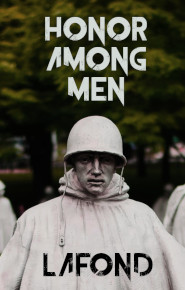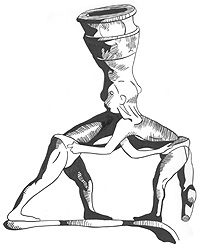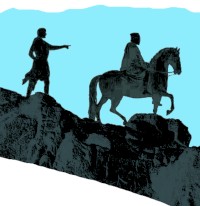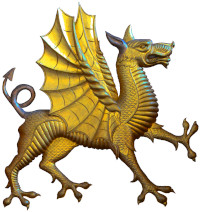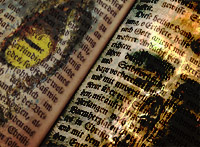A few months ago I was discussing a favorite toy tank from my youth with Dominick, when I discovered that he knows quite a lot about the history of WWII fighting vehicles. The following article is the first in his series on the war machines of the 20th Century. Dominick makes a good case for the military equipment of mass industrial armies being a reflection of a national will, which those soldiers who used said equipment were literally strapped into.
The M3 medium tank was the first American produced medium tank of World War 2 to see combat with first British and then American Forces. It was ugly, big and had a short mixed career. More than any other tank design this showed what the American situation was in the war; catching up with the rest of the armed world by going on what could be analyzed by the media and intelligence of the time. Going on second hand and at times skewed information, the logistics and designs of weapons had to be developed and modified while the stuff was being used in the field. Changing that design took time. Meanwhile men were fighting and dying in combat. This tank actually had moments of effectiveness and like most things it was a matter of numerous factors and timing.
The Gap
I once read a free market/economic exponent explaining that it was the capitalistic ideals of the Western democracies that allowed them to develop superior weapons to the National Socialists. I laughed, as the total opposite had been the case, with the totalitarian regimes (the Soviets included) having had better weapons in many cases then the Western allies. This had nothing to do with economic ideologies but the eternal lesson of combat experience. The Americans were late comers and had to learn the hard lessons, using drafted young men as their guinea pigs in combat.
The reason the Germans were able to come up with such lethal firepower was their battles in Poland, France and then in the Soviet Union. They learned from hard experience and the problem of Soviet medium (T-34)and heavy tanks(KV-1) that rendered much of the German antitank weapons and doctrines useless.( For the first year in Russia, the infantryman was the number one medium/heavy tank killer in the German military. Talk about balls of steel!) Jumping in to the fight late in 1942, there were many hard lessons to learn for the Americans. The M3 tank embodied this.
The M3 was based off a previous medium tank, the M2 (what imaginative designations). The US military already realized by early 1941 that a tank with a 75 mm gun was needed as this was the main German tank armament. The problem was a turret that could house this and since this was not possible in the short turnaround time needed to make a tank based off the M2, the cannon was put in the hull (as seen in an earlier prototype as well as in A French heavy tank, the Char B1). Armored command realized they needed a medium tank with a 75 mounted in a turret but they had to get tanks into the field ASAP, mostly for the British. That design would become known as the M4 (get the math?) aka the 'Sherman'. This shows the M3 was never meant to be anything more than a stop gap design to get a tank into the fight as soon as possible. Always a dubious proposition, but this was how a lot of allied planning went into weapons. General Chafee thought the tank was 'barely adequate' and wanted the M4 produced yesterday.
Still the tank was a useful weapon for the hapless British, whose tanks were the worst developed by any nation in the war. The mercantile Anglo nature seemed to relegate the tank to the lowest common bidder, great for businessmen but not for the poor Tommies getting burned alive or blown to shit by their German opponents. The British Cruiser tanks were no match for the German Panzer mark 3's and 4's mainly because of armament. The M3 evened the odds mainly because it had a cannon that was more powerful than anything the British had before and Erwin Rommel noted this in his reports.
The Plug
The M3 had major weaknesses. It was too high with a profile that made it easy to spot and hit, and made it hard to hide. Despite the almost cavalry type gallant view of tank combat, most smart crews hid their tanks with their hulls behind a natural structure. This both concealed and protected them while picking off tanks in the open. The 10 foot 3 inch height made that next to impossible. It had decent sloped armor but only in the front and German tank crews always went for flank shots. The ammo was stored in open shelves insuring that they would flare up if hit turning the inside of the tank into an acetylene chamber. Also the armor was riveted on which when hit (even with bullets!), turned the rivets into projectiles that bounced around the inside of the tank. Even the cannon's power was made less effective by it being in the hull. This meant the whole tank had to turn to line up a shot and become stationary. These flaws proved fatal for many British and American tankers but in a war of attrition, the numbers made the difference. Commodity and production versus excellence in quality and performance.
Other useless features were pistol ports (in the middle of a tank battle I am going to throw my 1911.45 cal handgun into the mix!), a side escape door which was an easy weak point for German gunners, and on the American version twin anti-aircraft machine guns whose manual mini turret made it impossible to follow German aircraft. A number were sent to the Soviets and like most foreign lend lease tanks relegated to infantry support. The Russian nickname for the tank was 'Grave for Seven brothers' but that would be true of nearly every Soviet tank created adjusted for number of crew members (worst WW2 profession was Soviet Tank Crew member). In the Pacific, these tanks were mostly used by the Australians to deal with the Japanese where it was more effective (mainly because the Japs had no decent tank to speak of).
American use of the tank was extremely short, basically being November of 1942 to around May of 1943. The M4 (aka 'Sherman') was really the tank the armored command wanted. The 2nd armored division particularly the 2/13 armor had used the M3 and learned the hard way that German 88mm antitank gun was a lethal weapon. The majority of M3 losses were from this and this made the 2/13 more experienced than the new units equipped with the M4. The famous defeat of the 2/1st Armor equipped with M4's at Sidi bou Zid in Febuary 1943 was embarrassing as they rode forward into a German ambush and were all but annihilated. The more experienced M3 equipped 2/13 Armor actually did better at Kasserine Pass by hanging back and opening up on the advancing Germans. American forces were able to inflict losses on the German Panzers but with equal losses, which was still better than the average Red Army unit (WW2 revisionism seems to jerk off to Soviet brilliance which always to the end relied on 7 to I Soviet numerical advantage. The true heroes of the Great Patriotic War were the Russian mothers who banged out a lot of male baby cannon fodder!).
The truth of armored combat was the defender had the advantage of the first shot. This meant advancing tanks were at the mercy of defender's waiting in hiding. The Germans had this advantage because they were losing ground! The difference maker was the better armor piercing capability of German cannons. Much of the German tank-to-tank success was based upon these two factors. ‘We are losing but will make you pay Ami/Ivan/Tommie!’
In The Declining Shadows
In the end a letter mailed home to a crying mother and devastated father was the final conclusion to all this tank geek stuff in action. This was the apex of industrial war. Young European and American men burned alive and shredded to bits was the end game of this fratricidal insanity that began in 1914. WWII was a huge psychic blow to the people involved. To a large extent the tank—such a neat toy in the hands of a boy—is the symbol of man’s reduction to war machine lubricant. The after effects continue to ripple through the national character.
Why does America think it is the most righteous ‘force for good' that ever existed?
Why is it always Munich in the 1930's?
Why is Neville Chamberlain (a man who did not want a repeat of the slaughter of 1914-1918) evoked to shame any politician who does not want to bomb and destroy women and children on the drop of a hat?
For an answer to those current questions look to the World Wars. We are living in the declining shadows of that conflict and shuddering through the death spasms of the civilization that created the computer you are reading this on and the school that taught you how to read the words. Believe it or not this was not a given but the product of hundreds of years of development that could be extinguished in a solar flare, avian flu pandemic, or our current favorite end time destination, the Zombie Apocalypse.
The M3 tank (also named the ‘Lee-Grant’) was a hard luck underdog. Just like the Depression Era working class American; swayed, enslaved and slowly discarded by the Managerial Revolution of 1933.
Dedicated to all of the unfortunate (and probably short) American men drafted into the Tank Corp, to risk shredding and immolation against their European cousins.
Notes
The M3 is featured prominently in two very different Hollywood films. The 1943 Humphrey Bogart movie 'Sahara' (one of the first multicultural masturbation flicks and originally a play written about the various brave Soviet ethnic groups uniting to fight the Fascists!) which is historically inaccurate to say the least. The other is the Steven Spielberg 'flop" 1941 which includes a diverse and much missed cast of actors: John Belushi, Toshiro Mifune, John Candy and Christopher Lee (not deceased).


